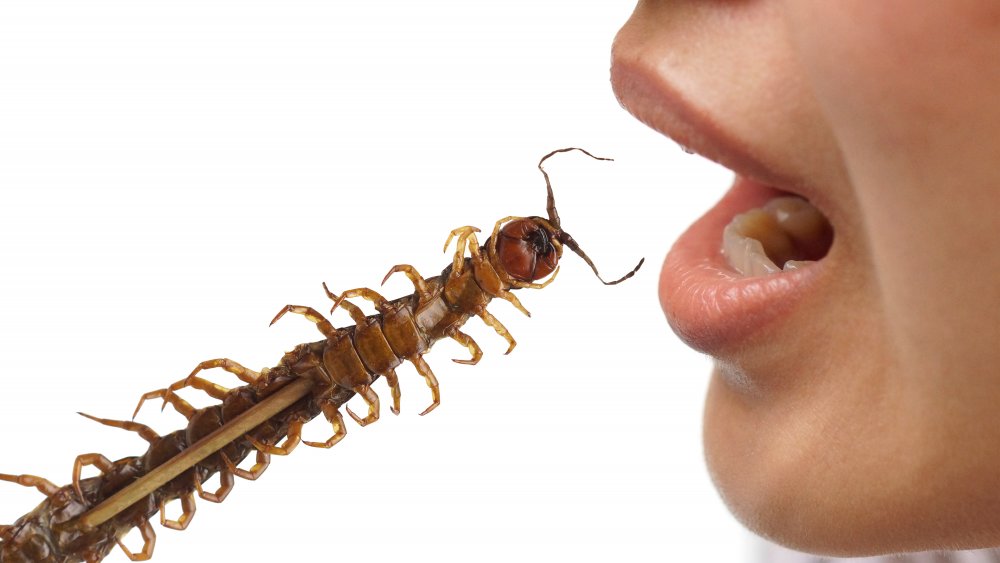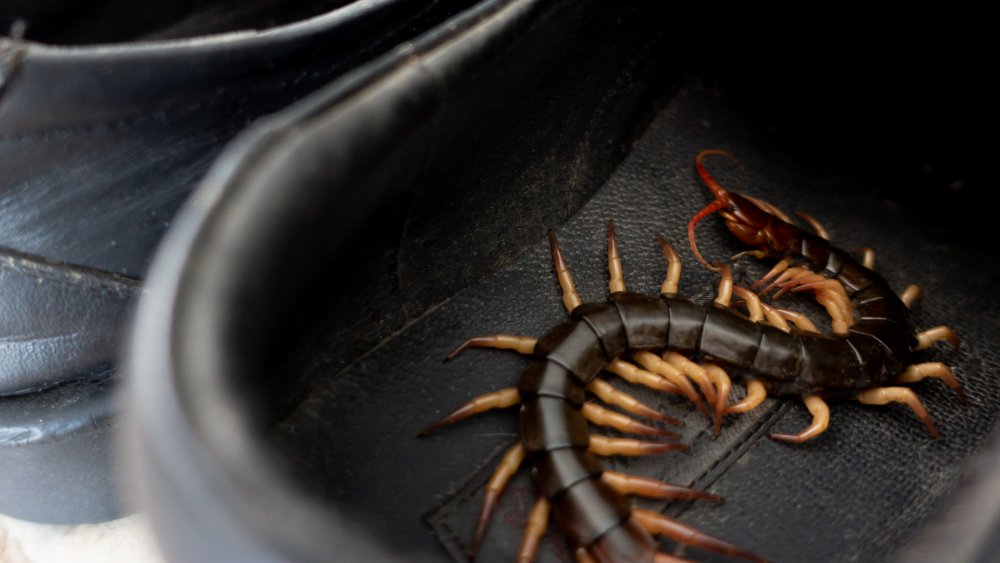Are Centipedes Poisonous To Humans?
Just to be clear, there's a difference between "poisonous" and "venomous." A venomous animal injects a toxin or venom into its victim with its teeth or with a spine or stinger. A poisonous animal will make you sick, too, but only if you eat it or, in rare cases, touch the poison it excretes from its skin. For example, BBC says a poison dart frog is probably the most poisonous animal on Earth — and that's not because it has a lethal bite. When a poison dart frog gets nervous, it literally sweats poison. One frog contains enough poison to kill 13 humans or two bull elephants, according to the Washington Post. Who's going to eat a frog, though?
Similarly, who's going to eat a bug, unless you're one of those strange folks who goes for the chocolate covered ants just so you can say you've eaten chocolate-covered ants? You're safe for now, but there may come a time when you'll have to eat bugs like centipedes, at least if Blade Runner 2049 has anything to say about it. So it might behoove you to know which arthropods are edible and which ones aren't.
Poisonous? Or venomous?
According to New York City Parks, millipedes aren't venomous, but they do excrete a chemical out of their pores, which in some species smells bad and in other species contains hydrogen cyanide. So you don't want to go eating a millipede. Centipedes, which look similar to millipedes, are actually venomous. Orkin tells us that they produce a toxin in a gland behind their fangs, and they're capable of delivering a painful bite if they, you know, happen to crawl over your ankle while you're lying in bed early one morning. The pain is similar to a bee sting, and for most humans it's more painful than it is dangerous. The bite of larger species tends to be more painful, but not necessarily more dangerous. The real danger is similar to the danger of being stung by a bee — if you're allergic, you can have an anaphylactic reaction. If not, you're going to hurt for a few hours and maybe a few days, but that's really all.
There is one species of centipede that has been implicated in at least one human fatality according to Science Direct — the giant centipede, also called the Chinese red head, which is common in Asia and Hawaii. But although certainly venomous, even that ginormous thing isn't usually deadly.
But can you eat a centipede? You know, if it's 2049 and there aren't any more cows, chickens, or pigs, or if you live in California and the power company keeps turning off the electricity? Yes, you can, as long as you remove the head and pincers. And hey, who wants the head or pincers anyway? Bon centipede.

